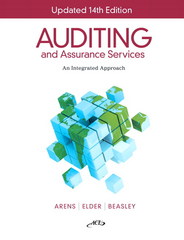| 4. | The first deposit is made on December 31, 2015, interest is compounded annually, andinterest earned is withdrawn at the end of each year. | | | | | | Deposit Amount | No. of Payments | Interest left in Fund | Fund Balance 12/31/2019 | | $2,500 | ? | ? | ? | | 5. | Using the appropriate present value table and assuming a 12% annual interest rate, determine the present value on December 31, 2016, of a five-period annual annuity of $2,600 under each of the following situations: (FV of $1, PV of $1, FVA of $1, PVA of $1, FVAD of $1 and PVAD of $1) (Use appropriate factor(s) from the tables provided.) | | 1. | The first payment is received on December 31, 2017, and interest is compounded annually. | | | | | | | | | | | | Table or calculator function: | ? | | Payment: | ? | | n = | ? | | i = | ? | | PV - 12/31/2016: | ? | | | 2. | The first payment is received on December 31, 2016, and interest is compounded annually. | | | | | | | | | | | | Table or calculator function: | ? | | Payment: | ? | | n = | ? | | i = | ? | | PV - 12/31/2016: | ? | | | 3. | The first payment is received on December 31, 2017, and interest is compounded quarterly. | | | | | | Using the PV of $1 chart, calculate the present value: | | Deposit Date | i = | n = | Deposit | PV - 12/31/2016 | | 12/31/2017 | ? | ? | $2,600 | ? | | 12/31/2018 | ? | ? | 2,600 | ? | | 12/31/2019 | ? | ? | 2,600 | ? | | 12/31/2020 | ? | ? | 2,600 | ? | | 12/31/2021 | ? | ? | 2,600 | ? | | | | | | ? | | | | 6. | Answer each of the following independent questions. | | Alex Meir recently won a lottery and has the option of receiving one of the following three prizes: (1) $82,000 cash immediately, (2) $30,000 cash immediately and a six-period annuity of $9,000 beginning one year from today, or (3) a six-period annuity of $17,000 beginning one year from today. (FV of $1, PV of $1, FVA of $1, PVA of $1, FVAD of $1 and PVAD of $1) (Use appropriate factor(s) from the tables provided.) | | 1-a. Assuming an intrest rate of 7% determine the PV value for the above options. | | | | | | | | Annuity Payment | PV Annuity | | Immediate Cash | | PV Option | | Option 1 | ? | ? | + | ? | = | ? | | Option 2 | ? | ? | + | ? | = | ? | | Option 3 | ? | ? | + | ? | = | | | | | 1-b. | Which option should Alex choose? | | | | | | | | Option (1) | | | Option (2) | | | Option (3) | | | 2. | The Weimer Corporation wants to accumulate a sum of money to repay certain debts due on December 31, 2025. Weimer will make annual deposits of $160,000 into a special bank account at the end of each of 10 years beginning December 31, 2016. Assuming that the bank account pays 8% interest compounded annually, what will be the fund balance after the last payment is made on December 31, 2025? | | | | | | | | | | | Table or calculator function: | ? | | Payment: | ? | | n = | ? | | i = | ? | | Future value: | | | 7. | Listed below are several terms and phrases associated with concepts discussed in the chapter. Pair each item from List A (by letter) with the item from List B that is most appropriately associated with it. | | | | | | | List A | List B | | | 1. | Interest | a. | First cash flow occurs one period after agreement begins. | | | 2. | Monetary asset | b. | The rate at which money will actually grow during a year. | | | 3. | Compound interest | c. | First cash flow occurs on the first day of the agreement. | | | 4. | Simple interest | d. | The amount of money that a dollar will grow to. | | | 5. | Annuity | e. | Amount of money paid/received in excess of amount borrowed/lent. | | | 6. | Present value of a single amount | f. | Obligation to pay a sum of cash, the amount of which is fixed. | | | 7. | Annuity due | g. | Money can be invested today and grow to a larger amount. | | | 8. | Future value of a single amount | h. | No fixed dollar amount attached. | | | 9. | Ordinary annuity | i. | Computed by multiplying an invested amount by the interest rate. | | | 10. | Effective rate or yield | j. | Interest calculated on invested amount plus accumulated interest. | | | 11. | Nonmonetary asset | k. | A series of equal-sized cash flows. | | | 12. | Time value of money | l. | Amount of money required today that is equivalent to a given future amount. | | | 13. | Monetary liability | m. | Claim to receive a fixed amount of money. | | | |






